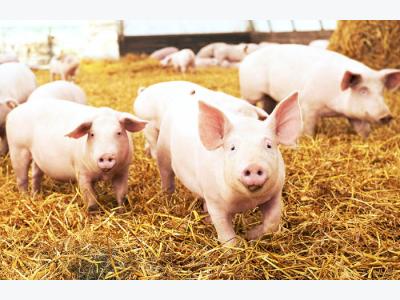9 tips for dispelling myths about pig farms and pork

These tips can improve public communication about the pork industry.
Certain bloggers, animal-rights activists and pseudo-news outlets frequently misrepresent animal agriculture, including pig farming, but the meat industry can crush those myths with communication, said Janet Riley, senior vice president of public affairs with the North American Meat Institute.
Riley presented tips for how pig farmers, pork processors and other in the animal agriculture industry can effectively communicate about pork production with the general public, during her session at the International Production and Processing Expo in Atlanta, Georgia, USA on February 1. Her session was based on the NAMI Meat Mythcrushers program, which provides resources for pig farmers and others in the animal agriculture industry.
1. Use analogies
Most people don’t raise pigs, especially not at a commercial scale, so they have little familiarity with farming activities or concepts. Using analogies can help people understand what goes on at a modern pig farm or pork processing plant. For example, Riley tells people that entering a meat plant is like entering a surgical operating room, considering all the washing and protective clothing a person has to put on.
2. Let people see and touch
As with analogies, explaining complex topics can be easier using models that people can touch and interact with. Riley uses modeling clay (as meat) and beads (as bacteria) to explain to children why steak can be eaten rare while ground beef cannot. She places the beads on the outside of the clay, leaving the piece representing steak intact, while kneading the one representing ground beef. She asked the children what would happen to the bacteria on each piece when it was placed on the stove. The children could see that the bacteria on the outside would be killed on the steak, while those on the inside of the ground beef would be protected from the heat
3. Talking about risks
Use easy to understand numbers and statistics, said Riley, not complex scientific equations, to explain the probability of various risks associated with pig farming and pork consumption. Also, present the positive statistics along with the bad. A 99 percent chance of safety sounds better than a 1% chance of illness.
4. No-risk is impossible
People may want to be guaranteed that there is no health risks associated with eating red meat, for example. Instead of dismissing their concerns by saying that the possibility of trichinosis or some other disease is tiny, remind them that they are in far more danger when they drive their cars and that everything in life has some risk.
5. Slow persuasion
Validating someone’s concerns or confusions can help them be more open to your reply, said Riley. Food can be an emotional topic, like religion. Just as someone will not be converted after a single conversation, they probably won’t give up aversions to large-scale pig farms quickly either.
Emotionally exited people often don’t listen to each other. Calming other’s emotions and your own can allow them to listen to what you have to say, said Riley. Speak calmly and be open to what they have to say.
6. Agree with confusions
Topics like antibiotic-resistant bacteria are complex and difficult to understand for everyone. Riley advised letting people know that you too found the topic difficult to understand.
Share informational materials to help people understand complex issues, she said, but don’t cram them down people’s throats.
7. Three points
When presenting your side, use lists of three topics, Riley said. Research suggests that people are most persuaded by three talking points, more than two or four.
8. Balanced reporting equals uncertainty
Be aware that when both sides of an argument are presented equally, people will tend to feel uncertain about both sides, she said. Even if one side has more weight of evidence, or even if the other is completely wrong, people will still feel uncertain. The anti-vaccination movement is an example of this.
9. Praise US food system
Compared to other nations, Americans spend far less of their income on food. Riley cited data that Americans spend approximately seven percent of their income on food, compared to 50 percent in Cameroon. For their money, Americans eat pork and other meats that are safer with smaller environmental footprints than in many other nations too, she said.
Tim Wall is a staff reporter at WATT Global Media.
Related news
Tools

Phối trộn thức ăn chăn nuôi

Pha dung dịch thủy canh

Định mức cho tôm ăn

Phối trộn phân bón NPK

Xác định tỷ lệ tôm sống

Chuyển đổi đơn vị phân bón

Xác định công suất sục khí

Chuyển đổi đơn vị tôm

Tính diện tích nhà kính

Tính thể tích ao



 A well-managed sow produces healthy offspring
A well-managed sow produces healthy offspring  BIOMIN opens piglet, broiler nutrition research center
BIOMIN opens piglet, broiler nutrition research center